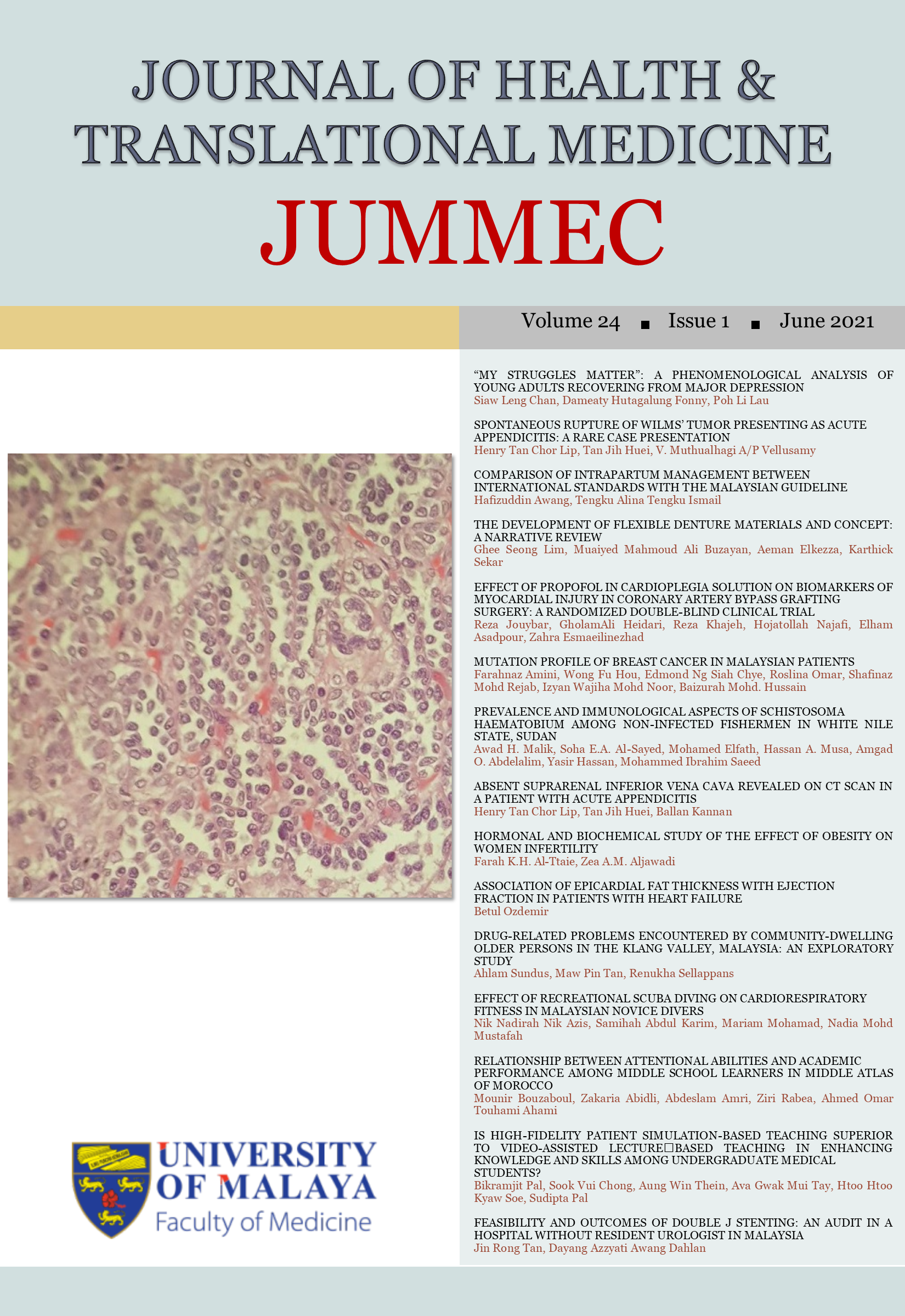FEASIBILITY AND OUTCOMES OF DOUBLE J STENTING: AN AUDIT IN A HOSPITAL WITHOUT RESIDENT UROLOGIST IN MALAYSIA
Received 2020-09-19; Accepted 2021-01-01; Published 2021-05-03
DOI:
https://doi.org/10.22452/jummec.vol24no1.15Keywords:
Double J Stenting, Feasible, Outcomes, Hospital Without Resident UrologistsAbstract
Introduction: Ureteric obstruction commonly presents as a urological emergency requiring urgent intervention with urinary diversion. Double J stenting (DJS) is the preferred option to relieve ureteric tract obstruction in our centre.
Objective: Our study aims to determine the feasibility and outcomes of DJS by general surgeons and medical officers in a hospital without a resident urologist and to identify the possible predictive factors for successful DJS.
Methods: This is a clinical audit of all patients scheduled for DJS in Hospital Bintulu, Sarawak, from January 2017 to March 2020. A total of 57 patients were included. Socio-demographic data and factors predicting success rate, i.e., level of ureteric obstruction and its causes (intrinsic or extrinsic), diagnosis, size and nature of stone(s), degree of hydronephrosis and pre-operative renal profile, were collected. Success rate and postoperative outcomes for all successful cases were evaluated. Bivariate statistical analyses were used to investigate the association of predictive factors with the success rate of DJS.
Results: Double J stenting was successful in 63.2% (36 cases) of our total samples of 57 cases. Out of 36 successful cases, 82.1% of the cases were able to return to baseline renal profile within 14 days and 83.3% did not develop fever within 3 days post-operative. The post-operative mean length of stay was 3.16 days and post-operative day 1 mean pain score was 0.72. Causes of obstruction by intrinsic factors, urolithiasis, pre-operative normal serum creatinine (<106 µmol/L) were associated with successful DJS.
Conclusion: Double J stenting is feasible and safe to be done in a hospital without a resident urologist with available facilities despite the limitations.
Downloads
Downloads
Published
Issue
Section
License
All authors agree that the article, if editorially accepted for publication, shall be licensed under the Creative Commons Attribution License 4.0 to allow others to freely access, copy and use research provided the author is correctly attributed, unless otherwise stated. All articles are available online without charge or other barriers to access. However, anyone wishing to reproduce large quantities of an article (250+) should inform the publisher. Any opinion expressed in the articles are those of the authors and do not reflect that of the University of Malaya, 50603 Kuala Lumpur, Malaysia.


